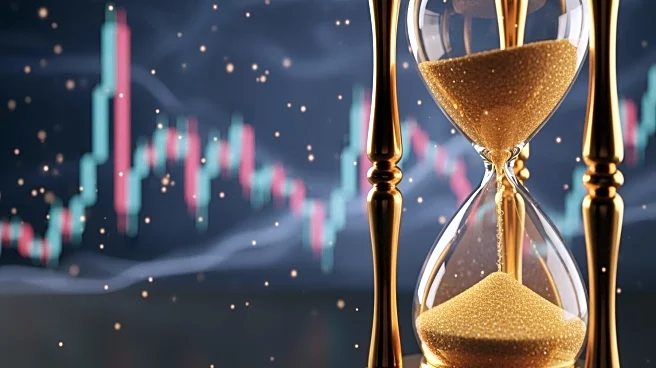What's Happening?
Gold futures have recently settled around $4,000 per ounce, marking a significant milestone in the commodity's performance for 2025. This year has seen gold prices surge by over 50%, reaching an all-time
high of $4,381 per ounce in October. The rally has been driven by a combination of geopolitical tensions, economic uncertainty, and shifts in monetary policy, including interest rate cuts by the U.S. Federal Reserve. Central banks have been major buyers, with purchases expected to reach 1,000 tons this year, further supporting the market. Despite a slight pullback in late October, gold remains near historic highs, reflecting robust demand from investors seeking safe-haven assets.
Why It's Important?
The surge in gold prices has significant implications for various stakeholders, including investors, central banks, and the broader economy. As a traditional safe-haven asset, gold's appeal has been amplified by geopolitical risks and economic uncertainties, prompting increased allocations from institutional investors and central banks. The rally also highlights the impact of monetary policy shifts, as lower interest rates enhance gold's attractiveness compared to yield-bearing assets. Additionally, the record inflows into gold ETFs underscore a shift in investor sentiment towards safety and diversification, potentially influencing market dynamics and investment strategies.
What's Next?
Looking ahead, analysts are divided on the future trajectory of gold prices. Some predict further gains, potentially reaching $5,000 per ounce, driven by continued demand and favorable monetary conditions. Others caution that a period of consolidation or correction may be imminent, given the rapid pace of the rally and potential changes in economic indicators. Key factors to watch include U.S. monetary policy decisions, inflation data, and geopolitical developments, all of which could influence gold's performance. The behavior of large holders, such as central banks and ETFs, will also be crucial in determining market trends.
Beyond the Headlines
The gold rally reflects deeper economic and geopolitical shifts, including a trend towards de-dollarization and increased reliance on gold as a strategic reserve asset. Central banks' sustained buying underscores a loss of confidence in fiat currencies, particularly the U.S. dollar, amid unpredictable policy environments. This movement has broader implications for global currency markets and economic stability, as nations seek to hedge against currency depreciation and geopolitical risks. The rally also raises questions about the sustainability of current market dynamics and the potential for long-term shifts in investment strategies.











